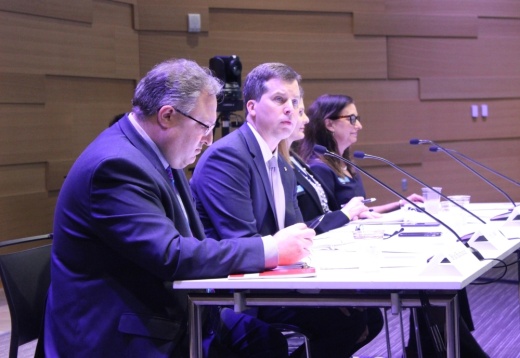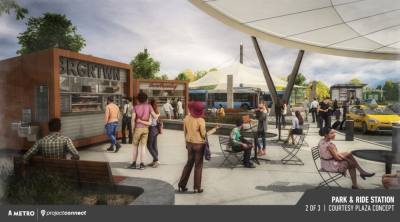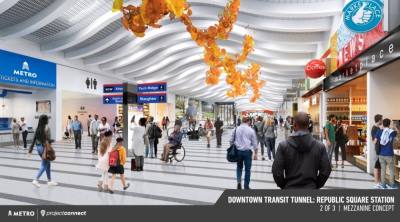In fall 2019, city leaders learned that funding Project Connect—Capital Metro’s blueprint for the future of the city’s public transportation—would cost somewhere between $4.7 billion and $9.8 billion.
After Austin City Council members gave direction to the public transit agency to choose light rail in areas of downtown Austin rather than bus-rapid transit, Capital Metro and city staff came back March 9 with updated funding numbers. As expected, the new projections were near the high end of that initial range. As a whole, the project is anticipated to cost $9.6 billion, according to the presentation from city and Capital Metro staff March 9.
Federal funding is expected to cover 40% of those costs, and an additional $200 million would be involved in regional projects, leaving $5.56 billion to be locally funded.
The Project Connect plans include two light-rail lines—the Orange Line from North Austin to South Austin and the Blue Line connecting downtown to the airport—as well as an underground tunnel connecting the two rail lines downtown. Those changes are part of additional upgrades including MetroRail lines, MetroRapid bus routes, new neighborhood circulators and Park & Ride facilities.
The mechanism the city will use to fund that $5.56 billion has not yet been finalized, but the city's deputy Chief Financial Officer Greg Canally presented options to council members and Capital Metro board members March 9.
The city could choose to hold a tax rate election in November asking voters for permission to increase year-over-year revenue in the in the fiscal year 2020-21 city budget above 3.5%. In 2019, Texas lawmakers set that 3.5% revenue threshold, mandating taxing entities such as the city of Austin go to the voters if they were to increase revenue over that cap.
The new tax revenue would be dedicated to Project Connect, and its impact to property taxpayers would vary depending upon the construction timeline. For the median homeowner of a $325,000 property, that tax impact could range from $18 to $37 per month, according to data presented March 9.
Canally said the tax rate election could provide a framework to provide both the capital costs and the ongoing maintenance.
“Given the state law we have the resources we have available, we have to look at our existing resources and how we can use those in different ways. We think it’s a really viable option. We have some more work to do,” he said.
In addition to the funding details, Capital Metro staff presented a draft program sequence for Project Connect, which would have both the Orange Line and Blue Line light-rail systems completed in nine years.
Brian Buchanan, principal project manager for HDR, an engineering firm working with Capital Metro on Project Connect, said that would put the estimated light-rail completion date somewhere between 2028 and 2029.
The next steps in the process will be a series of community meetings held across the city through the month of April to hear from the public. Then, a May 28 meeting is scheduled for the board to take a vote on the recommendation.
"We are not provided many moments to make true generational change in our city, and this is one of those," Mayor Steve Adler said.
Canally said city staff is looking to get council direction by May on a way forward for local funding. Legally, the city has until August to call for a local election Nov. 3.
District 6 Council Member Jimmy Flannigan, who will be up for re-election this November, said he remembers being a part of the public meetings during Austin’s previous effort to build rail—one that voters ultimately rejected in 2014. This time around, Flannigan said the process feels different.
“The idea we could put all this stuff together in November is really exciting, and I’m excited to share the ballot with this referendum. This is an opportunity to solve problems that haven’t been solved in the past,” he said.
Scheduled Project Connect public meetings:
- April 8: Fiesta Gardens Building
- April 13: Austin Central Library
- April 14: Webb Middle School
- April 20: South Austin Senior Activity Center
- April 22: Oak Hill Community Center
- April 27: Norris Conference Center
- April 28: Dittmar Rec Center
- April 29: St. Albert the Great Catholic Church, Parish Activity Hall
- April 29: Spicewood Springs Library
- April 30: George Washington Carver Museum







